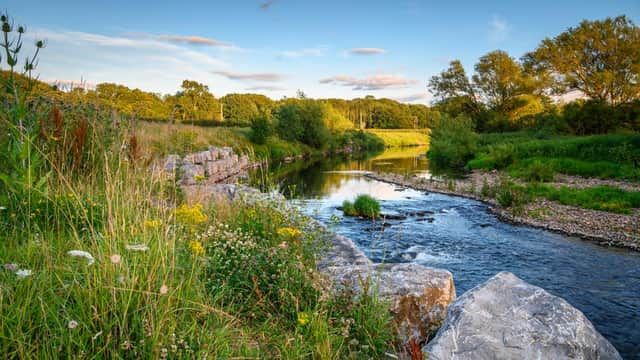Waterways in Yorkshire: a landowner’s obligations


It is a general principle of English law that the owner of land bordering on a non-tidal watercourse also owns the bed of that watercourse up to an imaginary line drawn down the middle.
This has implications regarding things like open water swimming, which is restricted on certain waterways in England – this means a summer bather might not have the right to swim, whether at a well-known or hidden gem beauty spot.
For many ordinary members of the public, they simply want to know if they can swim in lakes and rivers. Landowners can refuse access across their land if they are concerned that safety may be at risk and there is no existing public right of way across the land. Should things go wrong, they may find themselves liable, so many landowners expressly forbid swimming via signage. Clear signage can put the legal onus on the swimmer, not the landowner, when correctly implemented.
Open water swimming is not the only issue to consider when there is a waterway on your property. Legal firm Wilkin Chapman says farmers and other landowners who have waterways cutting through their land also have various rights and obligations when it comes to the waterway itself.
According to solicitor Charlotte Boyes, the starting point in the case of a non-tidal watercourse (or lake, in fact) is that the riparian owners (see below for a full description) on each side of the banks are presumed to own not only the banks, but also each half of the river bed up to the middle line. If land on both sides of the watercourse is owned by the same person, then it is presumed that the whole bed of the watercourse belongs to the landowner.
These presumptions are capable of being rebutted by the language used in a deed, or the nature of its subject matter, or the surrounding circumstances. By contrast, the water flowing within the watercourse is not capable of being owned until it is abstracted and taken into possession (i.e. contained, and then only for the duration of the containment).
The riparian owner’s rights that exist at common law are usufructuary only, covering the use and the fruits of that waterway. This covers the ordinary and reasonable use of water flowing past or over their land. This is a rare example of something in which the common law recognises no right of private property.
But what are the rules around riparian owners’ rights and the obligations at common law?
Who is a riparian owner?
An owner of land which is intersected by, or bounded, by a natural watercourse will have riparian rights. There must however, be a reasonable proximity to the watercourse. The proposition that every piece of land in the same occupation which includes a portion of the riverbank is far too wide. Therefore, if land is divided such that part of the land not abutting the river is assigned away, the assignee will not then be a riparian owner.
The rights of riparian owners require no grant or long use but are simply incident to possession of the relevant land.
A riparian owner has three main rights:
Right of user
this is a right that the riparian owner can use the water flowing through the watercourse for certain purposes connected to their land such as domestic purposes and for cattle.
Right of flow
this is a right is that a riparian owner is entitled to have water flow to them and from them without obstruction. This means that a riparian owner further downstream can protest against an obstruction upstream that hinders the flow of water to them, but also that a riparian owner upstream can protest if an obstruction downstream impedes the water flowing away from their land.
Right of purity
A riparian owner also has the right to have the stream flow past their land unpolluted. This means generally without alteration in its quality.
Obligations
There are various obligations on the riparian owner, generally, these are centred around ensuring that the riparian owners both upstream and downstream do not have their rights (as above) infringed. When deciding whether the purchase land that has riparian obligations attached to it, it is important to understand what your obligations will be.
If you are a farmer or landowner and want to ensure your obligations and rights are clear, Wilkin Chapman can advise. Speak to Charlotte Boyes on 01482 398829, email [email protected] or visit https://www.wilkinchapman.co.uk/sectors/agriculture-food